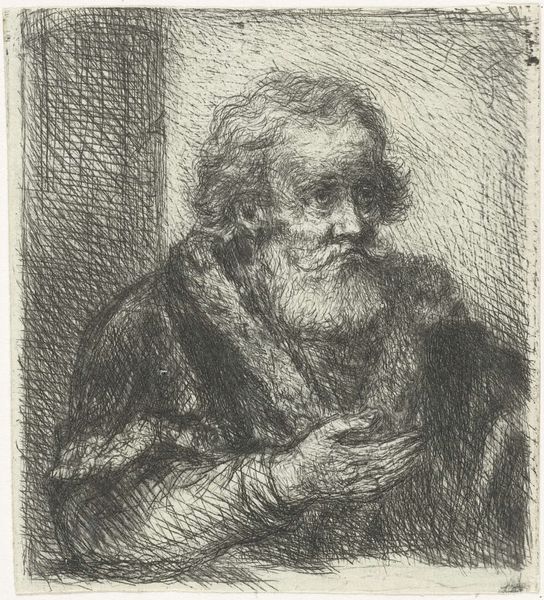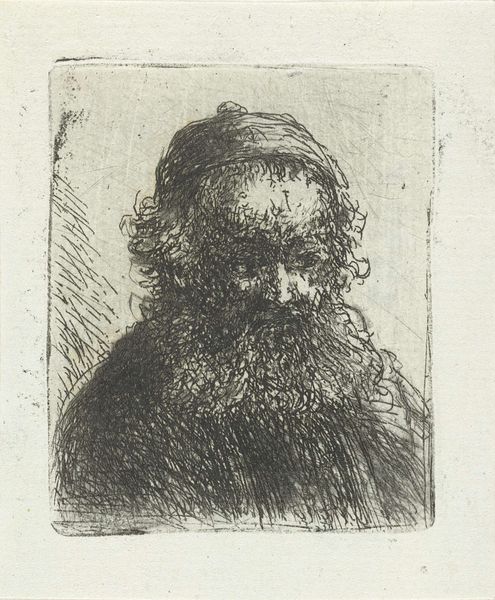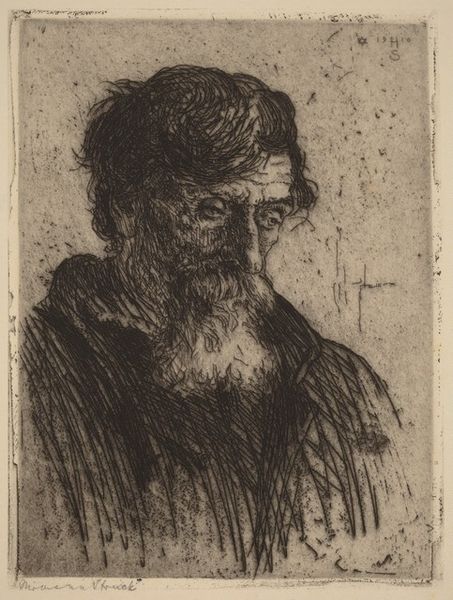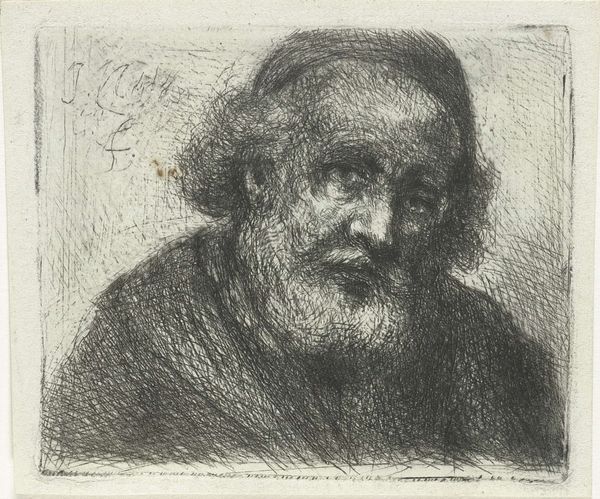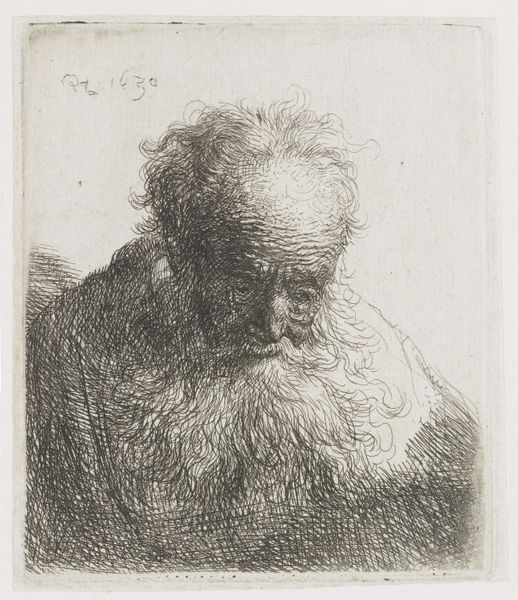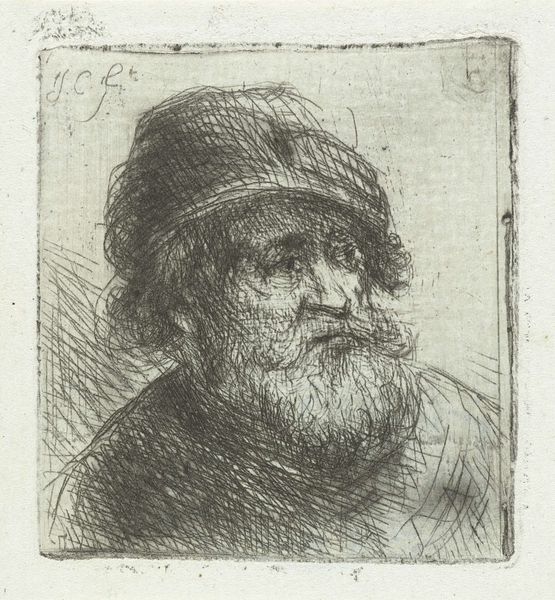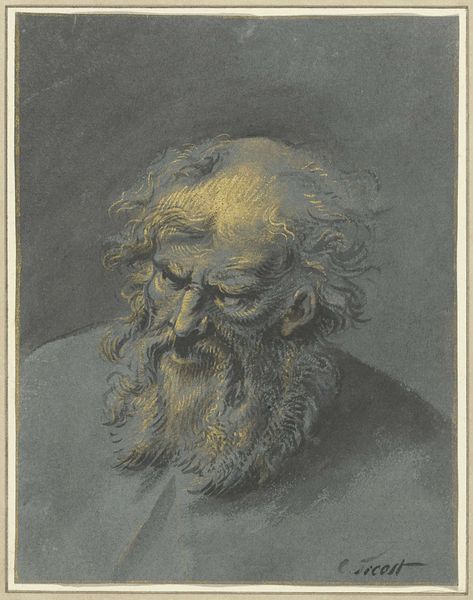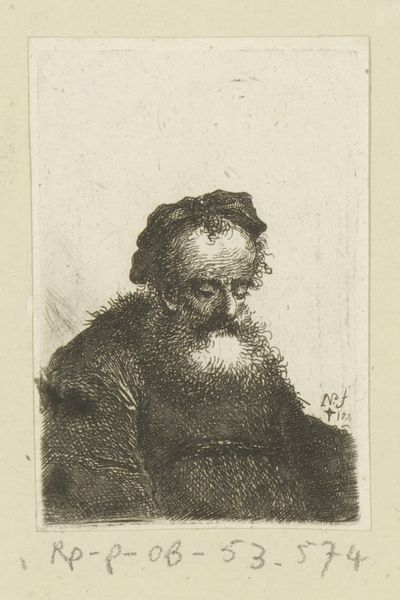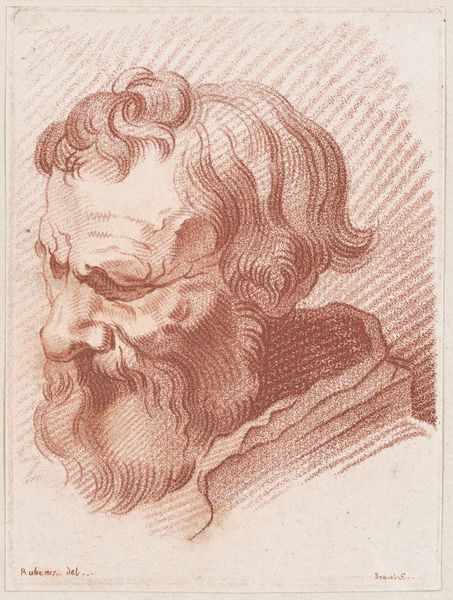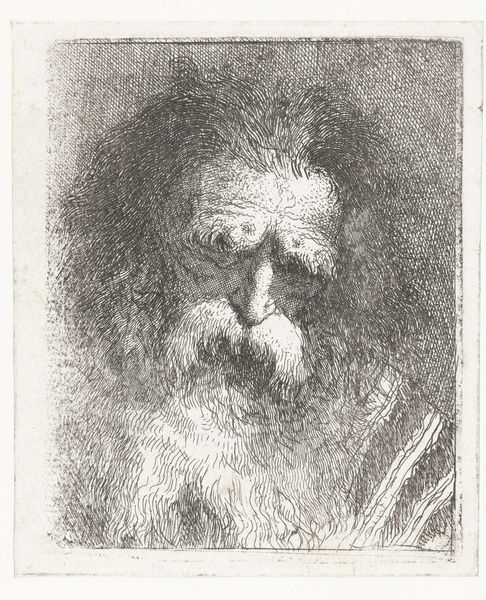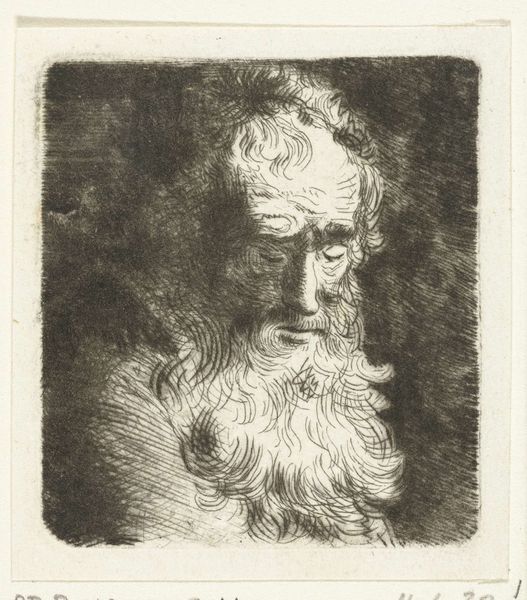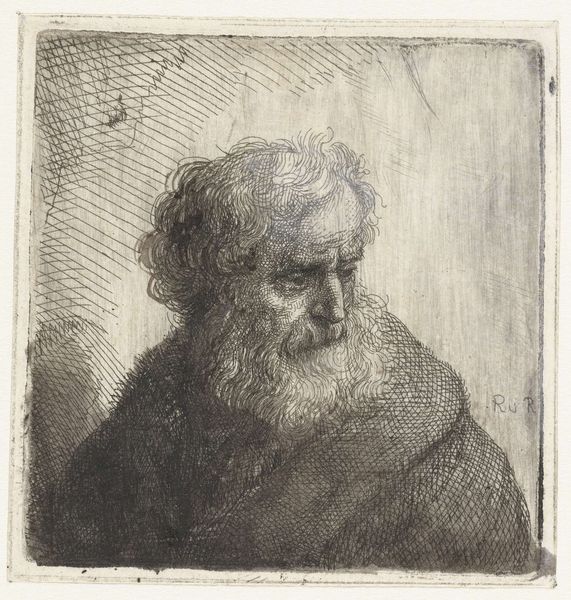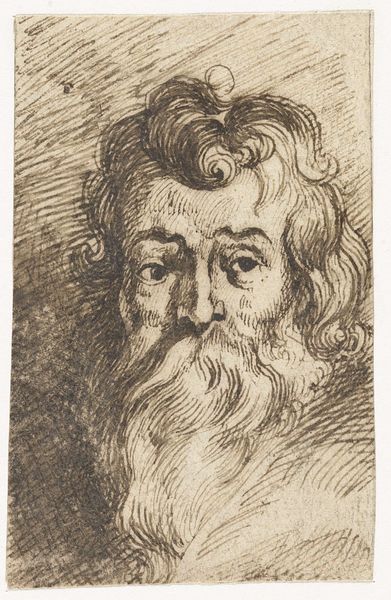
Dimensions: height 64 mm, width 51 mm
Copyright: Rijks Museum: Open Domain
Curator: Up next, we have “Bebaarde oude man,” or "Bearded Old Man", an etching by Jan Chalon, created sometime between 1748 and 1795. What strikes you initially? Editor: There’s a stark, almost mournful quality. The intense chiaroscuro gives it a powerful weight, a somber density. The line work, quite intricate. How does the etching process contribute? Curator: Etching was essential. Think about the labour, the skilled hands, creating textures. It's about how a copper plate transforms under acid, a direct result of skill and labor manifesting the Baroque realism. Editor: Precisely. This technique elevates the portrait to more than a representation, it speaks volumes about class, production, even the cultural moment shaping views on aging. Curator: Absolutely. Old age was then often imbued with connotations of wisdom and experience. And yet, consider this man’s veiled eyes and disheveled beard – a contrast that brings to the foreground issues of representation. Editor: So we see it’s more than craft; it mirrors broader shifts in labor, and the art market that fueled images of everyday folks while simultaneously shaping our perception of them, even now. Curator: That resonates. This etching transcends simple aesthetics; it allows a study of socio-political and individual narratives which become so important when dissecting identities. Editor: I see how Chalon's commitment to a very laborious process results in this intimate and provocative observation on the male form in 18th-century Europe. Curator: And so much emerges in understanding an artist’s work and the materials at hand when we also engage in discussions on class, identity, labor—it truly amplifies an understanding of the final artwork. Editor: Right, material conditions impacting visual culture... it opens a rewarding avenue for interpretation and understanding art. Thank you.
Comments
No comments
Be the first to comment and join the conversation on the ultimate creative platform.
